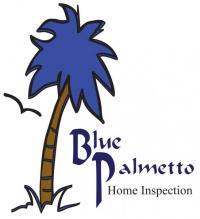- Home - Blue Palmetto Home Inspection of Summerville and Charleston
- Learn About Us and This Charleston Home Inspector
- What's Inspected
- Charleston Lowcountry Inspection Areas (geographic)
- Testimonials
- >>>Blogs (educational)
- Sample Reports & Documents
- Why Get a Home Inspection Report
- Charleston's Top Ten Reasons
- Home Inspector Photo Galleries
- Pricing
- Scheduling and Customer Information
- Home Inspection Authorization Contract
- General Scope of Work (electronic)
- Home Inspection Customer Satisfaction Survey
- Privacy Policy
- Full site
- The Roof Framers Field Manual
Charleston Home Inspector Discusses Plumbing Pipe Supports
Submitted by Ray Thornburg on Sat, 09/15/2012 - 17:28

Common Required Horizontal Pipe Support Intervals
| Type of Pipe | Commonly Used for | Horizontal Support Requirements |
| ABS | Sewer | 4 feet |
| Copper | Sewer | 12 feet |
| Copper less than 1 1/4" in diameter | hot or cold water | 6 feet |
| Copper greater than 1 1/4" | hot or cold water | 10 feet |
| PEX | hot or cold water | 32 inches |
| Pex-al-pex | 32 inches | |
| Cpvc less than 1" | hot or cold water | 3 feet |
| cpvc more than 1" | hot or cold water | 4 feet |
| PVC | cold water, sewer | 4 feet |
| Lead pipe | continuous | |
| steel pipe | 12 feet |
P2605.1
Improper pipe support under the home is one of the most common defects that I find during a home inspection. Since space is limited under the home I guess workmen get a little lax thinking no-one is going under there to check it out. However; lack of proper support for piping can cause all sorts of problems. Sagging sewer lines can cause backups and sagging condensate line can clog causing problems. In addition some types of piping need particular types of support. For example copper pipes with galvanized plumbers tape type strapping will result in galvanic action and corrosion. Let's take a look at a few pretty pictures.
Here is a sagging condensate line with almost no support. You can actually see moisture dripping off of it. Condensate lines should be insulated. They should be continuously sloped downward. Looks like they got a little lazy and stuck it out of the foundation vent to save time.
 This metal strap is severely rusted. A sign of moisture problems in the crawlspace. It's touching a copper pipe which will accelerate corrosion. Metal straps should not be used on plastic piping. Another sign of moisture problems in the crawlspace....falling insulation and corrosion on copper piping.
This metal strap is severely rusted. A sign of moisture problems in the crawlspace. It's touching a copper pipe which will accelerate corrosion. Metal straps should not be used on plastic piping. Another sign of moisture problems in the crawlspace....falling insulation and corrosion on copper piping.
 Pex should be supported every 32". No matter the type of pipe a provision must be made to allow for expansion and contraction (movement) of the piping material when choosing a hanger type.
Pex should be supported every 32". No matter the type of pipe a provision must be made to allow for expansion and contraction (movement) of the piping material when choosing a hanger type.
Piping in exterior areas, outside walls, attics and crawlspaces or where subject to freezing are required to be protected by insulation, heat or both heat and insulation. This is for areas where the winter design temperature is above 32° or lower (that's most of us that live north of the top portion of Florida). reference 2012 P2603.5 IRC
 Interesting picture shows piping being supported by the refrigeration lines to the air handler. Piping should be independently supported. Using other piping for support is not allowed. Sag is clearly seen. Not insulated and dripping condensation. Sewer lines in the background not properly supported either. Horizontal refrigerant lines should be supported at maximum 8 foot intervals (per lennox installation manual).
Interesting picture shows piping being supported by the refrigeration lines to the air handler. Piping should be independently supported. Using other piping for support is not allowed. Sag is clearly seen. Not insulated and dripping condensation. Sewer lines in the background not properly supported either. Horizontal refrigerant lines should be supported at maximum 8 foot intervals (per lennox installation manual).
Using a brick to support piping is not allowed. Piping must be supported using the structure of the home. In other words laying a pipe on the ground no matter if its a gas line, water supply or drain line is not allowed. It must have a hanger on it.
Blue Palmetto Home Inspection serves the entire Charleston Lowcountry area!



